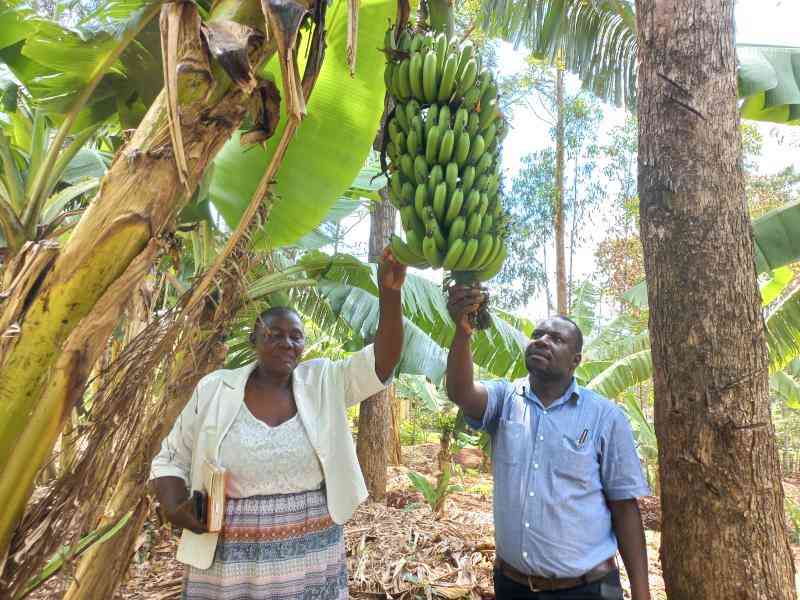Extension services have been lauded as a critical component in agriculture, but it collapsed owing to a number of factors. This crop season, there have been grievances raised by farmers on the need to revive this critical function that was alive in the past. But where did the rain start beating us?
Although many Government policy papers acknowledge the importance of a well-functioning agricultural extension service, evaluations indicate that they have not achieved the desired impact.
This has led to low competitiveness of the agricultural sector, poor market orientation, impoverisation of subsistence farmers, minimal produce value addition and poor development of cottage industries. During colonial times, white settler commercial farms had access to high quality extension programmes combining up to date information dissemination, regulation and linkages between farmers and credit providers, subsidised inputs and marketing systems.
After independence, more persuasive and educational approaches were adopted, funded by Government and donor programmes. Notable and effective approaches include the Farming Systems approach and Training and Visit (T&V) in the 80s/90s. The “Commodity specific approach” was predominantly used in the large export commodity sub-sector such as tea, pyrethrum, coffee and horticulture mainly spearheaded by commodity boards and private companies. Later on, more farmer-friendly, participatory and demand-driven extension approaches were incorporated such as the Focal Area Approach (FAA), Farmer Field Schools (FFS) and the Common Interest Group (CIG) approach which are still popular.
Until the late 80s, public extension services were well staffed and adequately facilitated with staff upto the sub-location level. The officers made regular farm visits and organised the famous agricultural barazas and field days. Additionally, functional Farmer Training Centres (FTCs) were located in all agricultural districts such as Wambugu FTC in Nyeri and Mabanga in Bungoma.
However, during the last 15 years, the staffing and facilitation of public sector extension has declined owing to the freeze in public employment and aggravated by reduced funding. The ratio of Frontline ExtensionWorker (FEW) to farmers is about 1:5,000 compared to the desired level of 1:400 leading to reduced spatial coverage and effectiveness.
Devolution of agriculture in 2013 further destabilised and disrupted services in most counties.
Studies indicate that extension services in Kenya are currently provided through a mixture of three different models:
· Purely free public extension services model serving largely smallholder farmers engaged in staple foods and minor cash crops.
· Partial cost sharing model in value chains where considerable commercialisation has taken place eg. the diary sector.
· Fully commercialised and embedded services involving private companies, producer Cooperatives for commodities such as tea, coffee, sugar, pyrethrum, barley, tobacco, horticulture and dairy.
To revitalise extension services, there is need to:
· Mobilise sufficient resources to finance extensionservices through inter alia the adoption of “Maputo and Malabo” declarations hence systematically raise funding for agriculture to 10 per cent of Gross Domestic Product.
· Better recognition of the key role of agriculture in driving other productive sectors in the economy, including manufacturing. This will require mainstreaming and centrally incorporating the sector in the county development plans, while allowing professionals a free hand in the design and operationalisation of intervention programmes.
More importantly, there is need to intensify the use of ICT based extension services, farmer to farmer learning and market led demand driven approaches.
Stay informed. Subscribe to our newsletter
[Jeremiah Nyori Mbugua is an Agricultural Extension and Value Chain Analyst at JKUAT]
 The Standard Group Plc is a
multi-media organization with investments in media platforms spanning newspaper
print operations, television, radio broadcasting, digital and online services. The
Standard Group is recognized as a leading multi-media house in Kenya with a key
influence in matters of national and international interest.
The Standard Group Plc is a
multi-media organization with investments in media platforms spanning newspaper
print operations, television, radio broadcasting, digital and online services. The
Standard Group is recognized as a leading multi-media house in Kenya with a key
influence in matters of national and international interest.
 The Standard Group Plc is a
multi-media organization with investments in media platforms spanning newspaper
print operations, television, radio broadcasting, digital and online services. The
Standard Group is recognized as a leading multi-media house in Kenya with a key
influence in matters of national and international interest.
The Standard Group Plc is a
multi-media organization with investments in media platforms spanning newspaper
print operations, television, radio broadcasting, digital and online services. The
Standard Group is recognized as a leading multi-media house in Kenya with a key
influence in matters of national and international interest.








